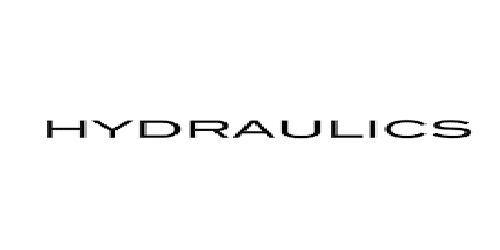Hydraulics is a mechanical function that is driven by the force of liquid pressure. Hydraulics is a technology and applied science that uses engineering, chemistry and mechanical properties, and other sciences related to the use of fluids. At the very basic level, a hydraulic is the aggregate of aerodynamic fluids that disturb the gases. Works on issues such as fluid flow in hydraulic pipes, rivers, and channels and their capture by dams and tanks. Some of its principles also apply to gases, usually in cases where the density variation is relatively low. Hydraulics is component mechatronics, which combines mechanical, electronics, and software engineering in product and process designing and manufacturing.
Common hydraulic systems include water pressure and irrigation systems that supply water, using gravity to create water pressure. These systems basically use the water’s own properties to distribute it themselves. Liquids in motion or under pressure for many centuries the French scientist-philosopher Blaise Pascal and the Swiss physicist Daniel Bernoulli formulated the law on which modern hydroelectric technology is based. Pascal’s law, enacted in about 1650, states that the pressure of a liquid is transmitted equally from all directions; When water is made to be filled in a closed container, the pressure will be applied at any point to circulate around the container. To control the flow of more complex hydraulic oils use a pump to pressurize the liquids (usual oils), remove them through a piston and valves through a cylinder. In hydraulic presses, Pascal’s law is used to increase the force; A small force applied to a small piston in a small cylinder is transmitted to a large cylinder with a tube, where it presses evenly against all sides of the cylinder, including the large piston.
A log splitter is a single-piston hydraulic machine that uses a valve at both ends of the cylinder that removes the pistons by pressurized fluid, forcing the wood into smaller pieces and returning to a home position. Fluid mechanics provides the theoretical basis for hydraulics, which focuses on application engineering using fluid properties. In its liquid power applications, hydraulic pressurized liquids are used to generate, control and transmit energy. Thus, the velocity energy, derived from motion, can be partially converted to compressive energy by extending the cross-section of a pipe, which slows down the flow but increases the field of pressure that the liquid is exerting.
The hydraulic function is similar to the pneumatic system. Both systems use liquids but, unlike meteorology, hydraulics use liquids instead of gases. Until the nineteenth century, it was not possible to develop velocities and pressures more than the systems provided by nature, but the invention of pumps brought with it the great potential to apply the inventions of Pascal and Bernoulli. In 1882 the city of London built a hydraulic system that supplied pressurized water through street mains to run machinery in the factory. Pneumatic design and control, safer (less risk of fire), and more reliable, can partially protect the process as a result of compression of the gas-absorbing shock. Free hydraulics are branches of hydraulics that relate to free surface flow, such as rivers, canals, lakes, estuaries, and oceans. Its sub-fields study the flow of open channel flow free channels.












